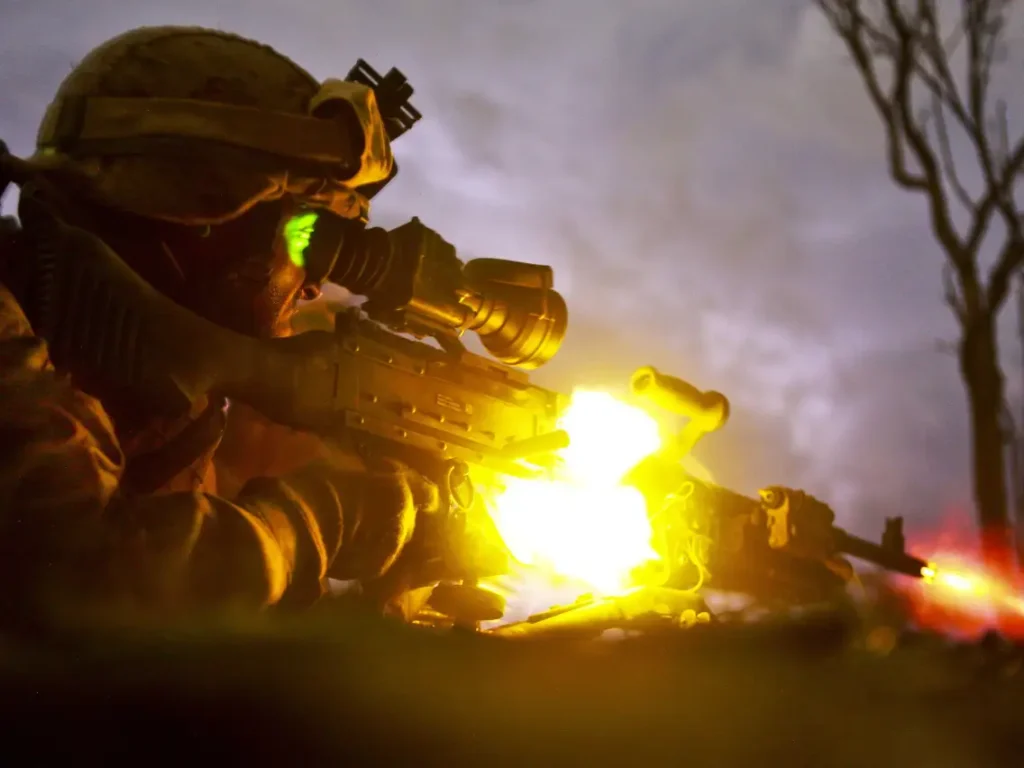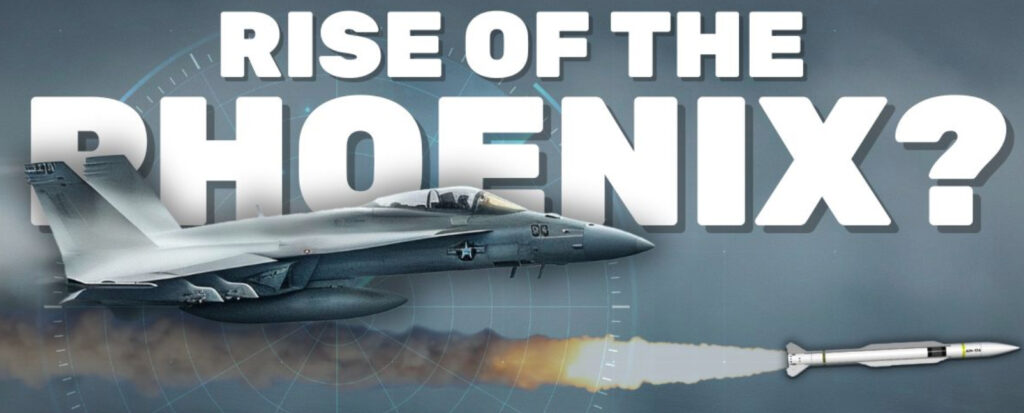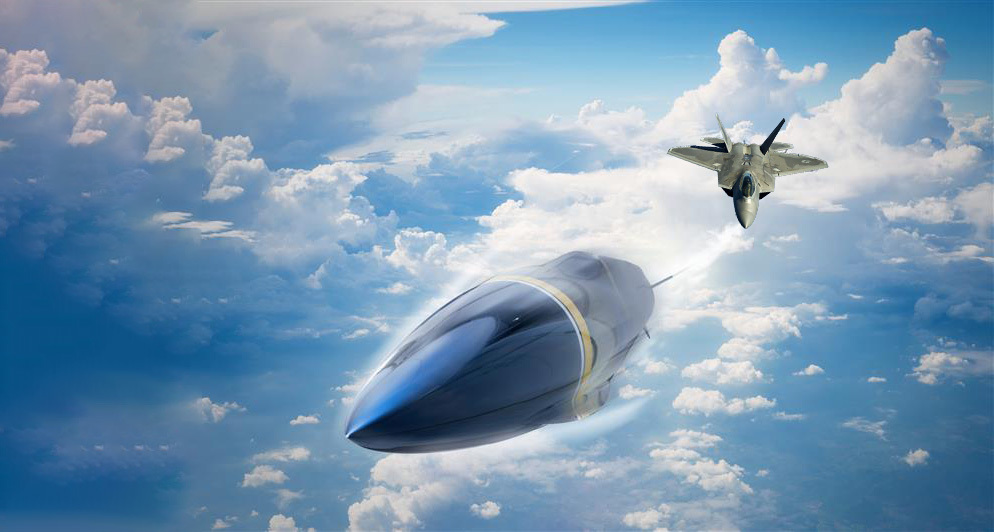In February of 2018, a small group of approximately 40 American special operators, Marines, and their Syrian allies found themselves significantly outnumbered, outgunned, and under attack inside a burned-out natural gas refinery in Eastern Syria. As dozens of Russian armored vehicles, including tanks, closed in on their position amid a downpour of tank shells, artillery fire, and mortars, the U.S. troops dug in to hold their position, well aware of the impossible odds that they faced.
After three hours of bombardment, the Russian mercenaries and their Syrian counterparts began closing in for the killing blow, advancing behind 45-ton T-72 tanks sporting 11-inch-thick frontal armor. But just as defeat seemed certain, American airpower arrived on the scene, laying waste to the attacking force in an orchestra of coordinated destruction delivered by waves of AH-64 Apache helicopters, AC-130 gunships, massive B-52 bombers, speedy F-15E Strike Eagles, and even F-22 Raptors.
For 45 minutes, seemingly every American combat aircraft in the region took its turn pounding the mercenary force into the ground, leaving hundreds dead and dozens of vehicles smoldering in their wake.
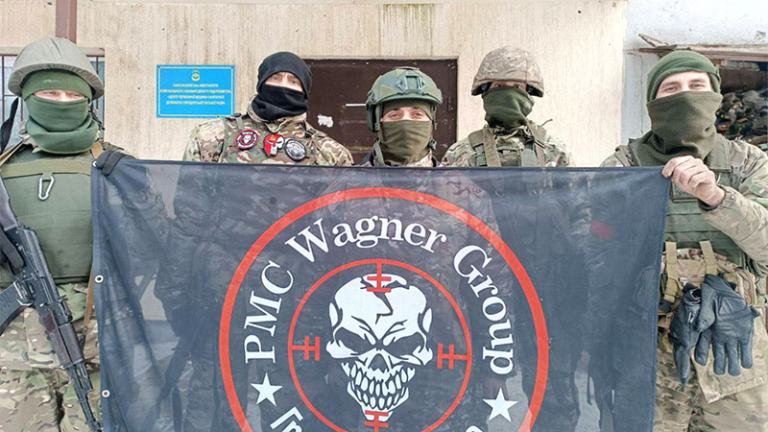
After decades of wondering what might happen if American and Russian forces were ever to cross paths on the battlefield, the Battle of Khasham, as it came to be known, offered a definitive glimpse, even if the Russian government disavowed any knowledge of the operation, or it’s subsequent failure.
By compiling accounts of this battle from various official and unofficial sources, including first-hand accounts from both American special operators and Wagner Group mercenaries, we now have a better understanding than ever before of how this incredible battle played out. It’s a harrowing tale of bravery in the face of seemingly insurmountable odds, of brotherhood among warfighters, and perhaps most of all, of the incredible effect coordinated airpower can have on the battlefield.
Editor’s Note: While this article pulls details from a variety of sources cited throughout, one of the most valuable pieces on this topic comes in the form of the first-hand account of the battle as told by three Special Forces soldiers who fought in it. The account was penned by Kevin Maurer and published by The War Horse in May 2023. You can read that story, titled “Special Forces Soldiers Reveal First Details of Battle With Russian Mercenaries in Syria,” by clicking this link.
Related: Russia’s missile arsenal is running low so Moscow turns to one of its few allies for help
America, Russia, and the Wagner Group in Syria
In November 2015, the United States began deploying troops to the embattled nation of Syria, where a civil war between the nation’s brutal Russian-backed dictator and a number of rebel groups had created a power vacuum that allowed a terrorist group known as the Islamic State, or ISIS, to establish a growing foothold.
While the Syrian government, and specifically its leader, Bashar al Assad, had sometimes been the target of American operations due to their repeated use of chemical weapons against civilians in Syria, America’s presence in Syria and support for the rebels, known collectively as Syrian Democratic Forces (SDF), largely focused on counter-terrorism operations. In fact, the growing threat posed by ISIS soon led to the warring Syrian parties setting aside their conflict for the time being, as American-backed SDF groups took the fight to ISIS primarily in the northeast; Russian-backed Syrian forces did the same further west. The Euphrates River served as a sort of unofficial deconfliction zone between Russian and American forces.
While Russian conventional military forces deployed to Syria throughout the conflict, Russia also relied heavily on its paramilitary mercenary force known as the Wagner Group. Founded in 2014 by Putin’s former caterer Yevgeny Prigozhin, Wagner has since become an important part of Russian foreign military operations in Africa and the Middle East, often conducting combat operations the Kremlin wants to be able to publicly deny its involvement in.
In June 2023, a very public falling out between Prigozhin and senior Russian military leaders spurred by ongoing combat operations in Ukraine led to a sort of pseudo-coup attempt, in which Wagner forces effectively invaded Russia with the apparent intention of capturing Moscow. That incident ultimately ended shortly after it began, and the ongoing relationship between Wagner and the Kremlin remains somewhat uncertain. But in 2018, the Wagner Group was still a vital part of Russia’s combat operations and foreign influence efforts.
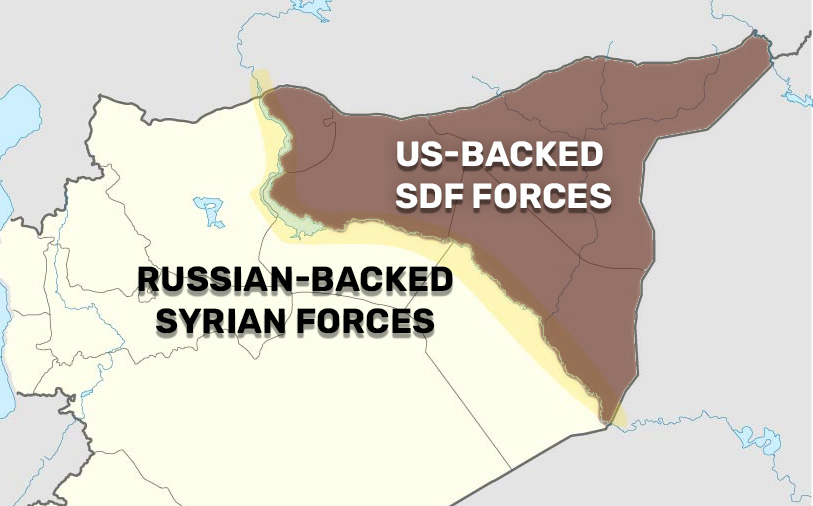
(Original map by the Atlantic Council, modified by Alex Hollings)
With tensions high, the U.S. and Russia initially adhered to a Memorandum of Understanding of Air Safety in Syria in October 2015, which called for general professionalism in Syrian airspace among all countries’ aviators and established a deconfliction channel in which Russia and the U.S. could engage to resolve burgeoning conflicts. By 2017, that deconfliction channel evolved into a 24-hour hotline, and while the Russian government repeatedly threatened to suspend communications, the line remained intact.
But despite these efforts to quell any possibility of open hostilities between Russian and American elements operating in Syria, the reality of the conflict – and of the naked aggression demonstrated by both Syrian and Russian forces in the region – repeatedly proved the agreement was rather one-sided. Syria’s continued use of chemical weapons and nerve agents against the civilian population, often enabled or at least obfuscated by Russian support, worsened matters even further.
After one such nerve-agent attack killed a reported 80 civilians in the Syrian town of Khan Shaykhun on April 4, 2017, President Donald Trump ordered a kinetic strike against Syria’s Al-Shayrat Air Base. A total of 59 Tomahawk cruise missiles were launched from destroyers USS Porter and USS Ross in the eastern Mediterranean Sea, wiping out Syrian air defenses, hardened aircraft structures, ammunition storage facilities, and more.
As SDF and Syrian forces dismantled ISIS, both groups closed in the Euphrates River that served as the de facto border between them. And almost immediately, Russian-backed Syrian forces began demonstrating a complete disregard for the deconfliction efforts – a trend that continues to this day.
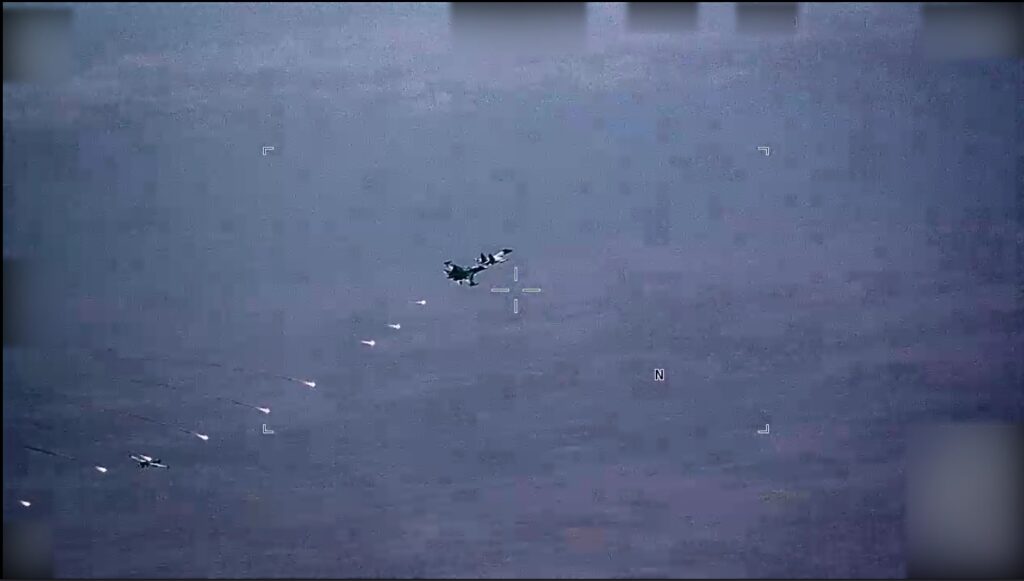
On June 18, 2017, Syrian forces attacked an SDF-held town just south of Tabqa near the Euphrates. As American officials attempted to reach Russian leaders via the deconfliction hotline, a Syrian Air Force Su-22 began bombing American-backed SDF forces in the area. As a result, a U.S. Navy F/A-18 Super Hornet piloted by Lt. Cmdr. Michael “Mob” Tremel engaged and shot it down using an AIM-120 AMRAAM radar-guided air-to-air missile.
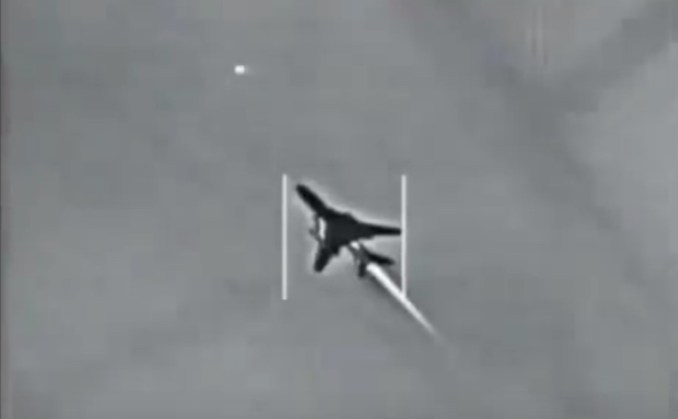
A similar incident played out in September 2017, with Russian aircraft bombing a position where SDF troops and American advisors were known to be located. Following the second incident, senior leaders from both countries met once again in an effort to deconflict the counter-terrorism operations. During the heated negotiations, Brett McGurk, presidential envoy to the global coalition fighting ISIS, made it clear that the United States would not hesitate to defend its interests or its troops in Syria, emphasizing the Euphrates River as the point of no return for Russian or Russian-backed forces.
“We had worked with the Russians diplomatically basically to draw lines on the map at the Euphrates River and we said, ‘Look you don’t cross that river. If you cross that river we’ll kill you.’” McGurk later explained on CBS’s Face the Nation. In November, American and Russian officials formally agreed to keep Russian-backed Syrian forces on the west side of the river, and American-backed SDF forces on the east.
But it immediately became clear that Russia had offered only hollow promises. U.S. coalition forces continued to report both Russian and Syrian military aircraft crossing over the Euphrates River six to eight times per day. In fact, an estimated 10% of all Russian flight activity violated the agreement to respect the Euphrates River border.
On November 15, two U.S. Air Force A-10s flying east of the Euphrates nearly collided with a Russian Su-24 Fencer as it performed aggressive maneuvers seemingly trying to bait them into a fight. Two days later, a Russian Su-30 Flanker crossed the line and flew directly under another pair of A-10s in another apparent attempt at intimidation.
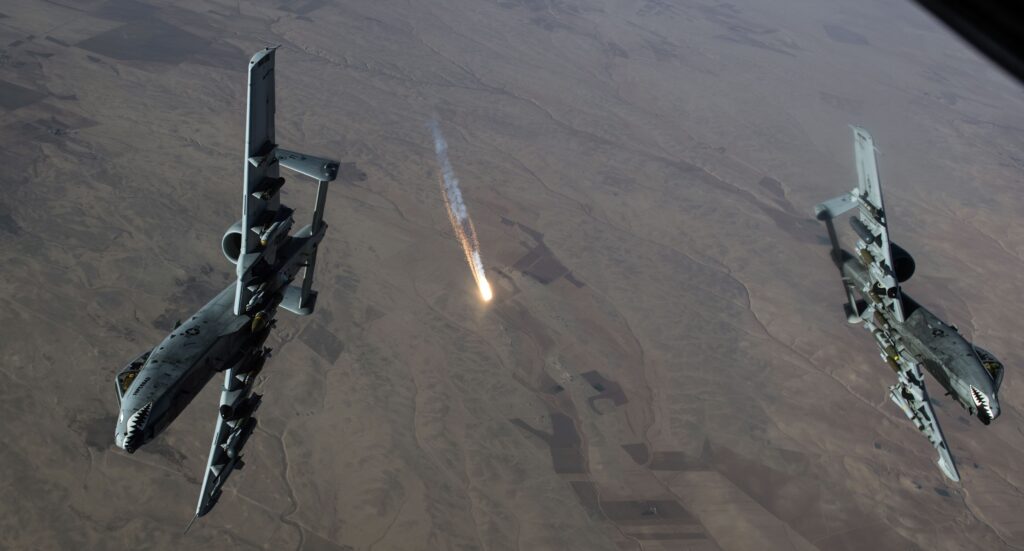
That same day, two American F-22 Raptors intercepted a Russian Su-24 operating on the wrong side of the river. They shadowed the ground attack platform for 20 minutes as it made mock bombing passes over SDF forces on the ground, seemingly trying to provoke the air superiority fighters into firing. American officials later stated that the Raptor pilots would have been within their legal rights to fire on the Russian jet, but demonstrated great restraint in preventing yet another escalation.
“It’s become increasingly tough for our pilots to discern whether Russian pilots are deliberately testing or baiting us into reacting, or if these are just honest mistakes,” said Lt. Col. Damien Pickart, the command’s spokesman. “The greatest concern is that we could shoot down a Russian aircraft because its actions are seen as a threat to our air or ground forces.”
In hindsight, it seems clear that Russian and Syrian forces were attempting to assess how aggressively U.S. troops would defend the SDF’s claimed region east of the Euphrates. In particular, Assad’s regime wanted control of lucrative oil and gas fields within SDF-controlled territory, going so far as to offer the Wagner Group with a 25% share of the production proceeds of captured facilities.
The lucrative prospect of capturing a natural gas refinery
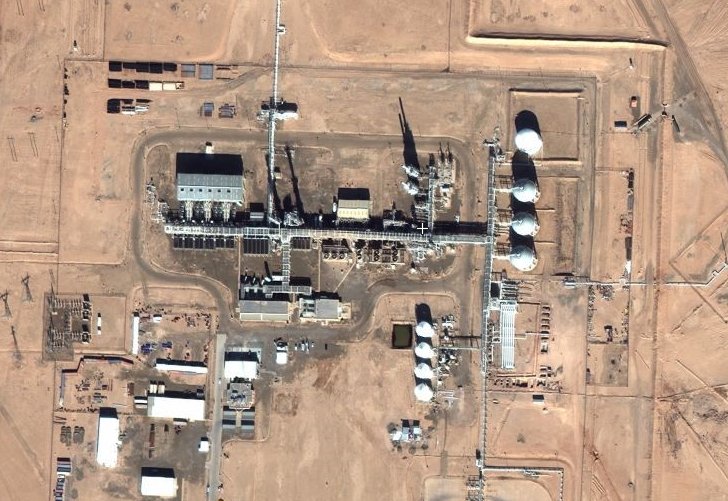
It was likely on that 25% commission Wagner – and the Russian government – had their eyes on as they planned to capture the Conoco natural gas refinery, widely regarded as among the most important facilities in Syria due to its ability to process over 450 tons of gas per day. The plant, which had been captured by U.S.-backed SDF forces in September 2017, was east of the Euphrates, inside SDF-controlled territory, and home to a small contingent of elite American special operations advisors hailing from Delta Force, Special Forces, and the Army Rangers.
“Our guys were going to commandeer an oil refinery, and the Yankees were holding it,” explained a Wagner Group mercenary in an audio recording that was leaked in the days after the battle.
Well aware of the small American outpost within the sprawling facility, a force comprised mostly of Wagner Group mercenaries, but supported by a smaller number of pro-Assad troops, began to form a bit more than a mile from the plant. By 3 pm, the force had grown to more than 500 troops and 27 vehicles, including armored personnel carriers, T-55 and T-72 tanks, and at least one ZU-23 twin-barrel anti-aircraft gun the Wagner troops had oriented level to the ground to use for direct fire.
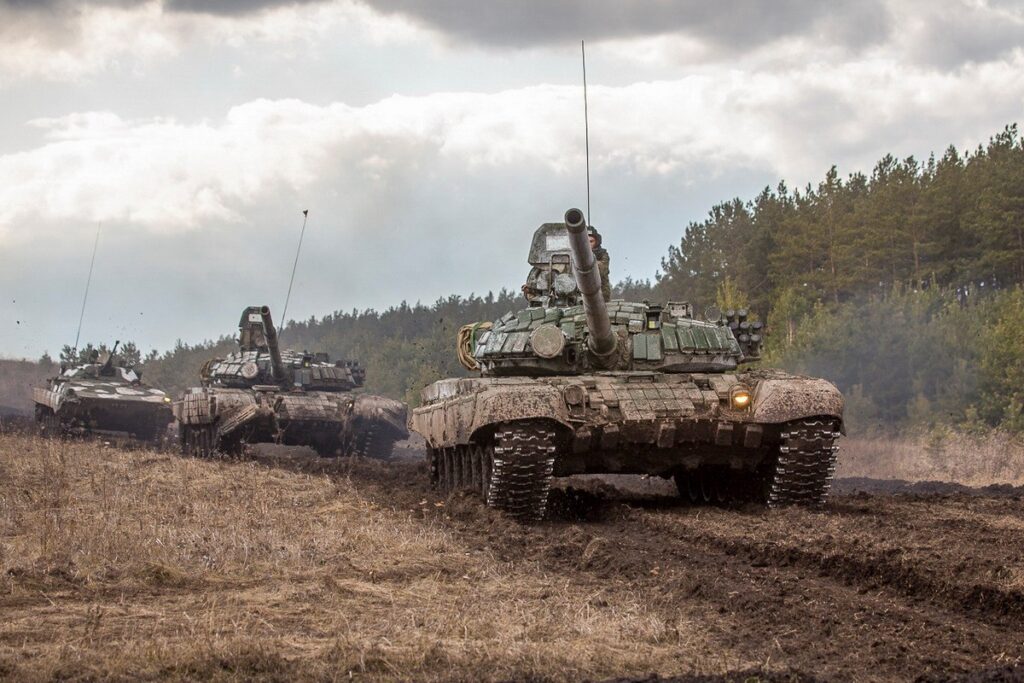
Larger American forces positioned in a mission support site 20 miles away watched closely as the Russian and Syrian forces amassed, relaying developments to the American air operations center at Al Udeid Air Base in Qatar and the Pentagon. Using the same approach the Russian military would leverage before the invasion of Ukraine two years later, the amassing Russian troops attempted to disguise their intentions behind the guise of a training exercise. Well aware of this common Russian tactic, it was this that first convinced the operators on the ground that they were in for a fight.
“I think part of the tell was that Russian doctrine says that they’re going to do things that look like exercises right up into the point,” explained a Green Beret identified only as “Josh.” He was a part of the 10-man quick reaction force (QRF) positioned 20 miles away and shared his experiences in an incredible piece published earlier this year by The War Horse.
At right around 10 pm, the Russian mercenaries dropped the ruse and opened fire.
All hell breaks loose
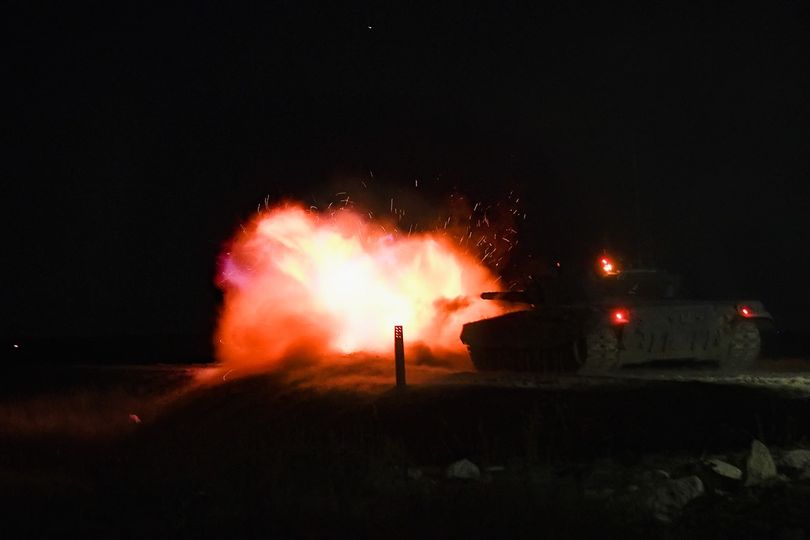
A single MQ-9 Reaper drone circled overhead as a sudden wave of artillery fire and mortars rained down on the American detachment inside the Conoco plant facility, sending all 30 troops scrambling for cover behind their armored trucks and hastily dug dirt berms. With the fight on, the Reaper overhead launched its salvo of AGM-114 Hellfire missiles, destroying one artillery system, but that did little to slow the avalanche of ordnance piling in. Out of missiles, the Reaper continued to circle overhead, helplessly relaying video footage of the fighting to higher headquarters.
“Hey men, the guys down there are getting attacked,” a Green Beret on the QRF team identified as “Chauncey” called to his team leader, Andrew. “We have to go and respond.”
Andrew was a new Special Forces team leader on his first combat deployment, but he didn’t hesitate. The two men and the rest of their 10-man team piled into five armored trucks, already packed with their combat gear, and stomped on the gas. They were accompanied by a small number of unarmored SDF trucks and troops.
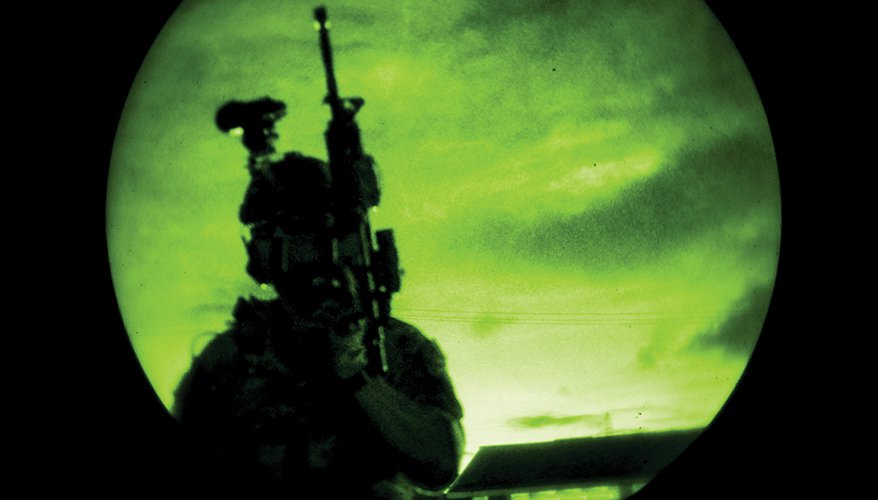
Driving under cover of darkness and using night vision goggles to navigate the cratered roadway, the teams struggled to balance concealing their approach with the need to close ground in a hurry.
“We’re hauling in the dark, and then, all of a sudden, you pump on these berms and it’s a mad dash to get slowed down and then serpentine through these berms and then get moving again,” recalled another Green Beret of the QRF team named Josh.
As the Green Berets and Marines raced to the refinery, it’s important to recognize that they knew full well that they could offer only bodies and ammunition… They didn’t have nearly enough firepower to balance the scales of the fight, let alone tip them in their favor. Without additional support, they were willingly driving into an American bloodbath, intent on helping their brothers in arms, even if it came at the cost of their own lives.
“I made peace with what was about to happen,” Josh recalled. “Because of what was coming over the radio, I was like, ‘We have to get there for our dudes.’”
The Russian-led forces were unleashing hell, filling the air with smoke and shrapnel as 50-pound tank rounds, artillery shells, and mortars added concussive percussion to a symphony of small arms fire. With no weapons capable of penetrating tank armor, there was nothing the American forces could do as the attackers pressed closer behind the advancing tanks. Even the most highly trained special operations troops on the planet can’t beat back a tank column with small-arms fire.
Related: Debunking 5 of the most common gun myths
The smartest man on the battlefield
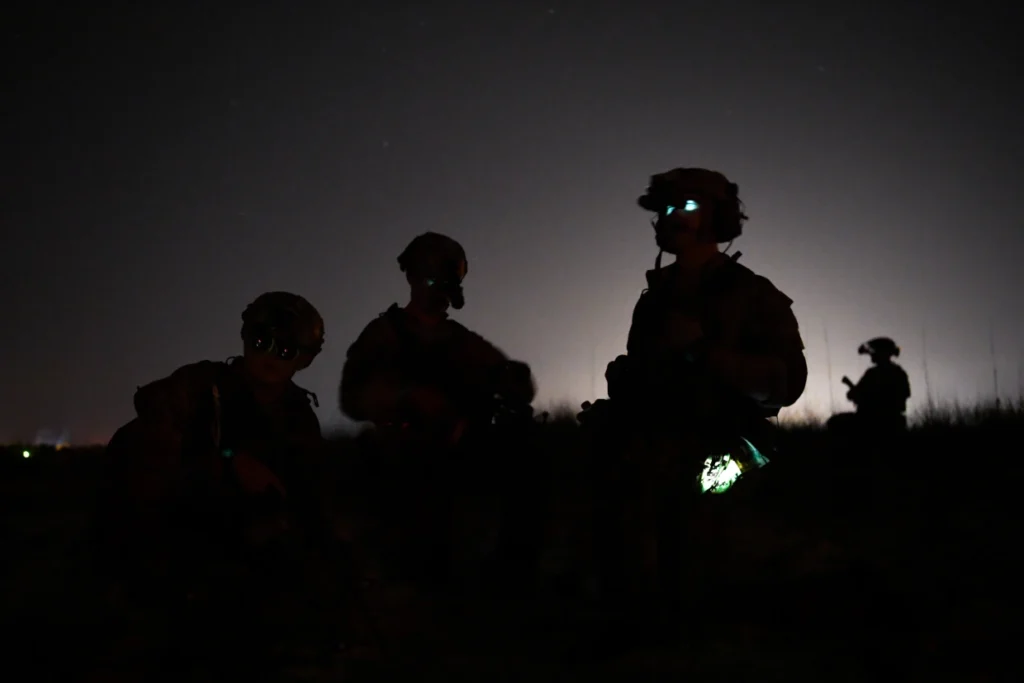
As explosions tore through the darkness ahead, the lead truck in the hasty QRF convoy full of SDF soldiers stopped, turned around, and took off. The SDF troops had no interest in driving into a Russian hornet’s nest.
“Smartest man on the battlefield,” Chauncey later recalled. Soon, the rest of the SDF troops accompanying the QRF team followed suit.
After what seemed like a constant stream of fire, a lull in the Russian artillery provided the QRF team with the opportunity it needed to reach the plant. Andrew had reached the special operators inside and let them know they were coming. The defenders used an infrared laser to guide the QRF into the American perimeter.
As they pulled in, Andrew recalls seeing American and SDF commandos laying in defensive positions on the dirt berm facing the Russians with massive six-foot craters from artillery shells littering the gaps between them. “We’re just hiding behind the trucks eating artillery,” the on-site commander told Andrew as he looked around.
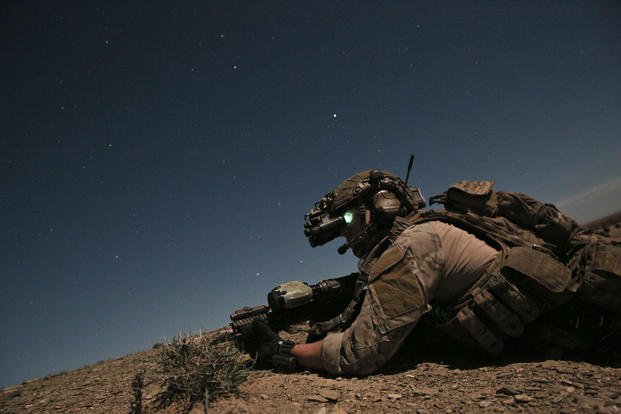
Meanwhile, American officials frantically attempted to contact Russian representatives via the deconfliction line. Even after they finally got someone on the phone, they were stonewalled. Russia refused to acknowledge that the Wagner Group was part of its forces.
However, interestingly, after American officials managed to reach their Russian counterparts, the mobile surface-to-air missile system accompanying the Wagner forces was reportedly powered down, though it remains unclear exactly why.
Back at the Conoco plant, Andrew took stock of the situation. Between American special operators, Marines, and the SDF troops brave enough to stay and fight, they had a total force of fewer than 50 men and six vehicles to stand up against a combined arms force of more than 500 men, more than two dozen armored vehicles and a handful of tanks. These were steep odds, to say the least.
While the men were armed with only machine guns and small arms, the five armored trucks the QRF team rode in with were armed with remote-controlled .50 caliber turrets with thermal optics, so the Americans lined them up behind the berm, facing the advancing Russians. The ZU-23 anti-aircraft system opened up fire on the berm, unleashing more than 33 massive 23mm rounds per second as it strafed their position.
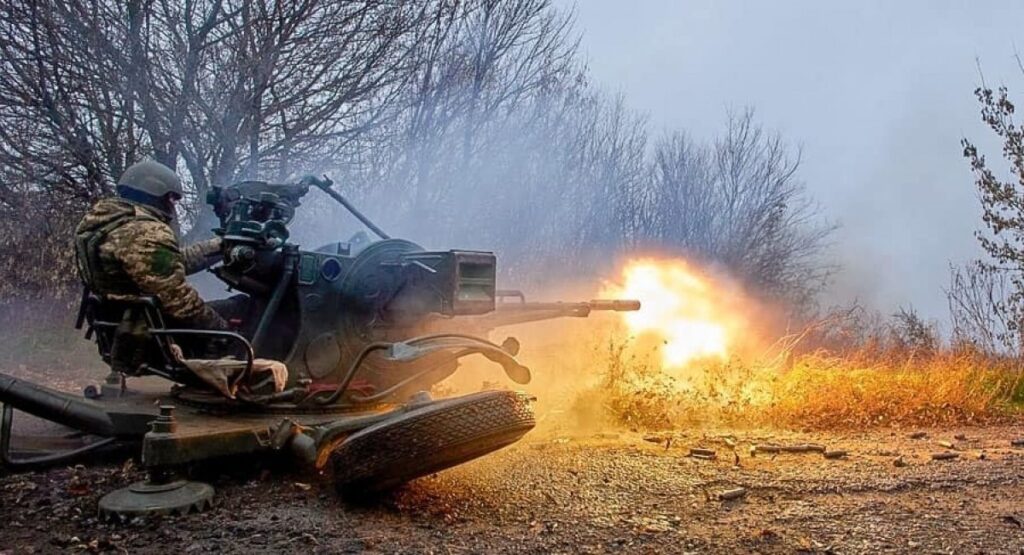
“Hey, this is what we get paid for,” Chauncey remembers announcing to the other Green Berets from the truck’s internal radio. “I want everybody to be alert, aware, like eyes open. If you see anything at all, give us a distance, direction, description of what you see. Call out what you see, and then we’ll make decisions on the fly and get busy.”
Related: The Long Range Desert Group and the birth of special operations around the world
The American forces strike back
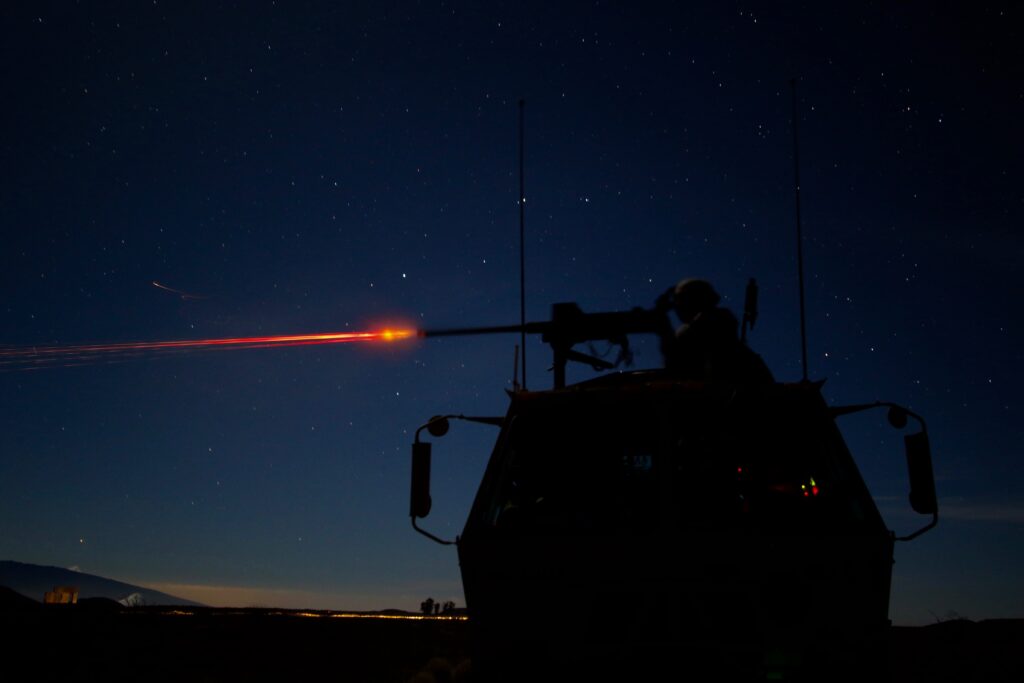
The Wagner troops advancing on foot were now visible through the remotely operated .50 cal’s optics and Josh called out to open fire. Another Green Beret manning the gun controller in his vehicle pulled the trigger… but nothing happened. He tried again, but still nothing. He passed the controller to Josh, who realized the safety was still engaged and quickly released it before pulling the trigger again and bringing the massive weapon above him roaring to life. He watched through the thermal camera as the white silhouettes of advancing mercenaries burst into scattered parts upon impact with the large rounds.
That certainly caught the Russians’ attention. As Josh recalls, it seemed as if the entire horizon lit up as every Russian and Syrian soldier returned fire at once in retaliation. But their fire was undisciplined and sloppy. The American commandos, on the other hand, were anything but.
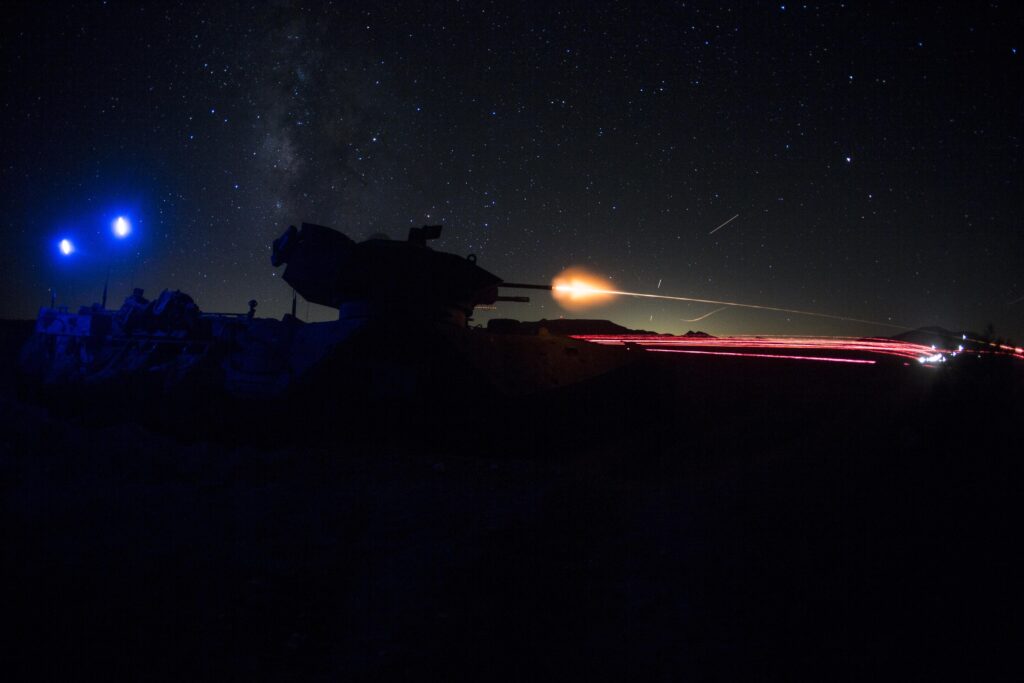
Almost immediately, the armored trucks’ .50 cals fired in rhythm, with each gunner firing and pausing to cool their barrels in sync to ensure there was a constant and steady stream of rounds unleashed at all times. Their combination of precision and volume of fire left the advancing force with no choice but to take cover.
“We’re a lot more accurate than they are,” Chauncey recalled. “We can see the sparks flying from hitting metal. We can see fighting positions getting shot up. We know that we are having good effects and we’re killing personnel.”
After Josh’s .50 cal ran dry, he was left with no choice but to leave the relative safety of the armored vehicle to reload the weapon. He climbed out of the vehicle and began struggling to link 100-round belts through his night vision goggles, which were set for long-distance focus. As he worked, an artillery round landed nearby, knocking him back into the truck. Frustrated, he flipped up his NVGs and turned on a red headlamp to help him see.
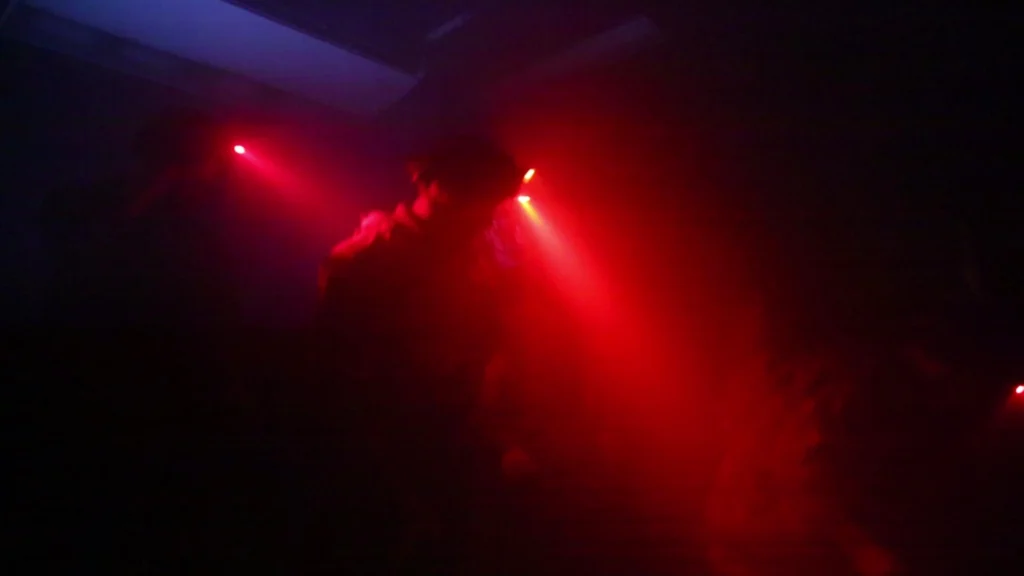
But just as he loaded up the last belts, the distinctive chop chop chop of the ZU-23 echoed from the distance as 23mm tracer rounds tore through the air just above him. Josh immediately recognized his mistake.
“You idiot,” he recalled thinking. “You put your headlamp on. They just called your bluff. You put your light on. One could have had your number on it and there wouldn’t have been anything left to send back. I need to get the gun back up – and before I eat a Red Bull can-sized slug while I’m doing it.”
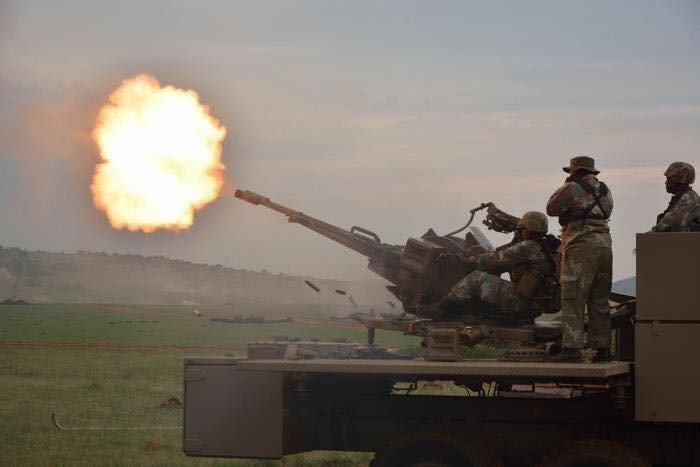
For the moment, it almost seemed like the Americans had the advantage thanks to their night vision and precise fire, but the moment didn’t last long. As Chauncey drew a map of their relative positions in relation to the Wagner forces, his radio interrupted.
“Hey, I got eyes on these really big vehicles,” another special operator told him through the radio. Chauncey didn’t even have to ask. He knew it meant that the tanks were advancing.
Related: Russian military is using suicide tanks to stop Ukraine’s advance
This is where it ends…
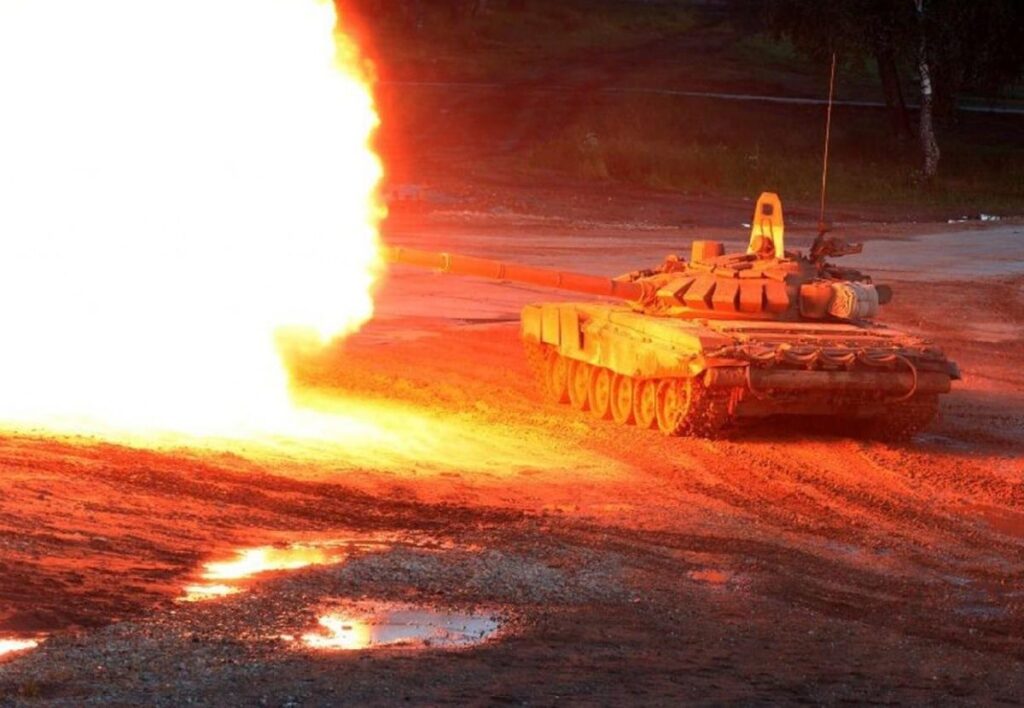
From their position, they could see 10 Russian tanks on the horizon, creeping forward under a hail of fire. Chauncey knew that some older Russian tanks may not be able to withstand direct fire from their .50 cals, but that newer ones would shrug them off without much trouble. He directed the team to fire five rounds at each tank as they closed, but each five-round volley was matched by the echoing sound of five rounds ricocheting off tank armor. While not surprising, their biggest weapon’s inability to halt the tank’s advance was yet another blow to morale.
“Hey, what’s up with aircraft?” Chauncey called over the radio to Andrew, but no one had any idea. They were unaware that the presence of the now-deactivated air defense system had forced command to delay scrambling air support out of concern that the massive radar return of the F-15E Strike Eagle or the slow-and-steady trot of an MQ-9 Reaper could make for a tantalizing target, and in turn, a high profile Russian propaganda victory if they were to successfully shoot one down.
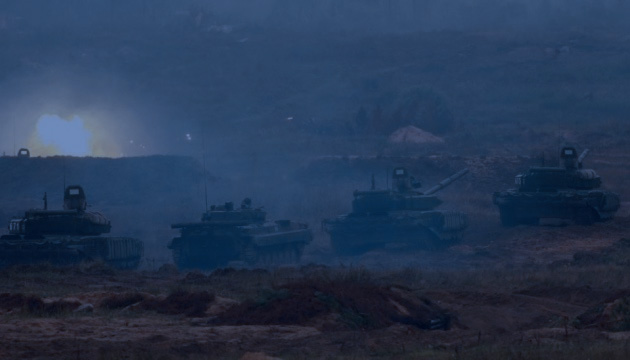
Chauncey assessed the situation one more time. The tanks bearing down on them were now within 2,000 meters, practically close quarters for most well-trained tank crews. Behind them, about 500 armed soldiers, some stacked in armored vehicles and others on foot, awaited their opportunity to overrun the gas plant and kill everyone inside. Without a single weapon that could slow the tank’s advance, death – or maybe even capture – was all but imminent. But Chauncey also knew that the stakes were higher than just one natural gas facility.
Capturing the plant would grant Wagner a foothold on the east side of the Euphrates River that it could leverage to continue its advance into SDF-controlled territory. Further, the same factors that made the plant as defensible as it had been these past few hours would likewise make it extremely difficult to potentially recapture it from Russian and Syrian forces.
Resolute in his decision, he called out over the radio, “We’re going to stay and fight.”
Nobody questioned the order, but in his head, Josh recognized that it meant nearly certain death.
Turning the tides against the Wagner Group
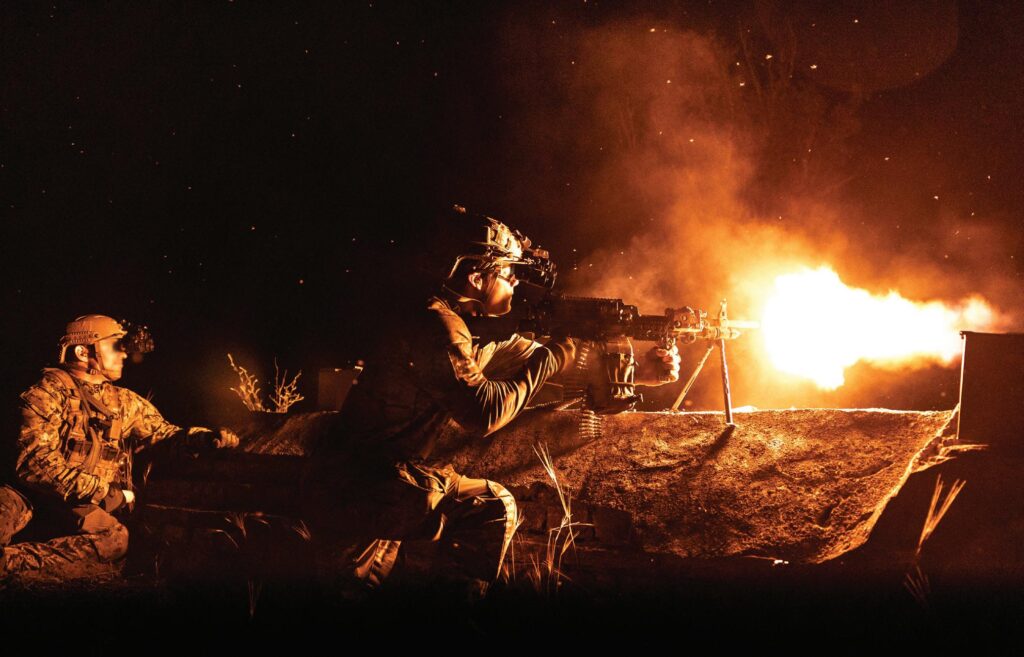
“Everything that we’ve accomplished, and this is where everything ends,” Josh told The War Horse. “Against Russian mercenaries with tanks. Not even the enemy that we came to fight. We had to make peace with the possibility of not making it back, but it was easier to swallow knowing we were defending our friends and doing what needed to be done.”
The team continued to fire, forcing Wagner troops behind cover. Yet this did nothing to stop the steady advance of the tanks, which were now closer than 1,000. The tanks were firing 125mm shells that miraculously kept missing the vehicles.
But just as things seemed hopeless for the American force, the closest tank erupted in a flash of light and was engulfed in a fireball that halted the column in its tracks.
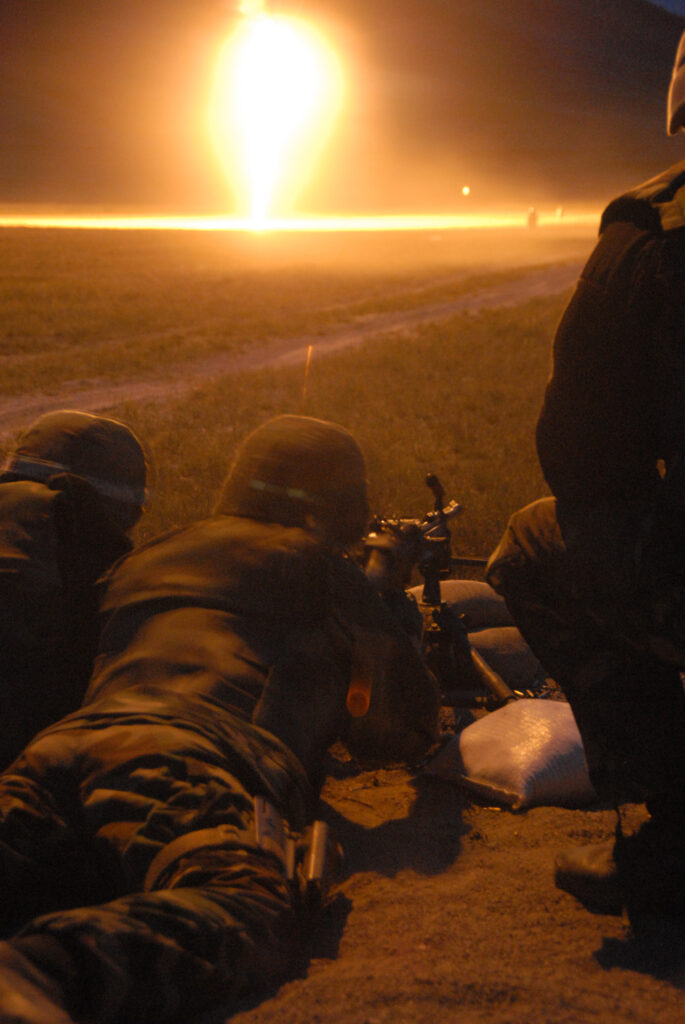
Then another tank to the west followed suit as the distinct buzz of General Electric T700 engines erupted from overhead. A pair of AH-64 Apache attack helicopters emerged from behind a nearby berm, unleashing 30mm fire on the advancing Russian positions with their M230 chain guns.
“Then their f— choppers flew in and started f— everybody,” one Wagner mercenary recalled in a leaked audio recording.
The special operators opened fire once more with their .50 cals, highlighting the tanks with tracer fire for the Apaches to wipe off the board as they came around for another pass. As the tide began to turn, Andrew’s radio chirped to life.
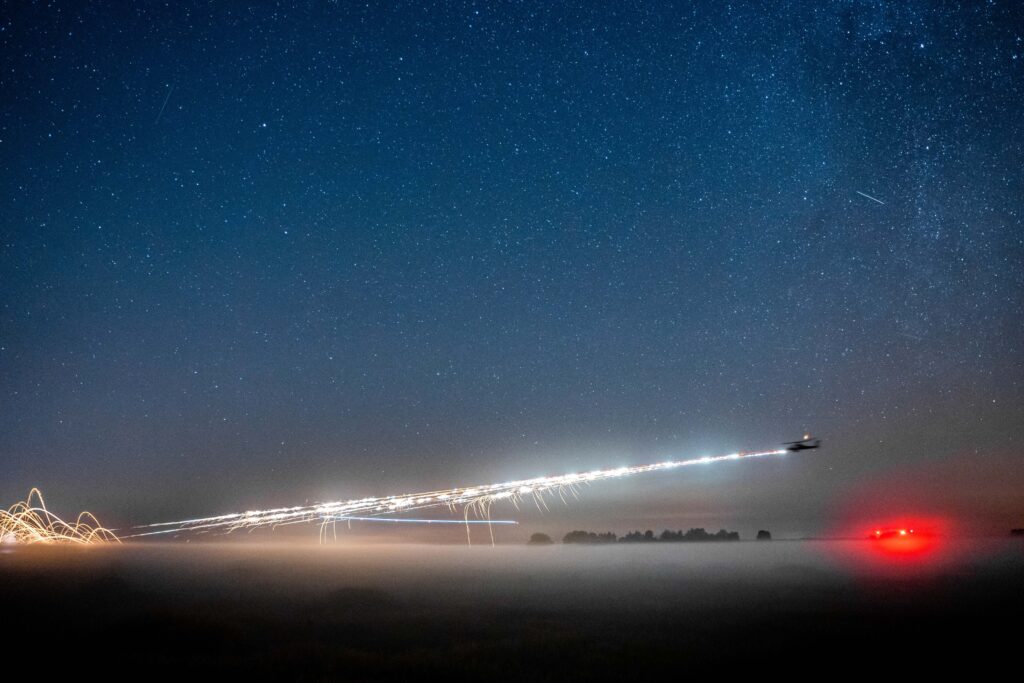
“Hey, just be advised, incoming bomber,” the radio called out. Andrew’s relief was quickly dashed, however, as the voice clarified, “No dude… Russian bomber inbound.”
It was a crushing announcement. Andrew and his team had survived hours of relentless artillery, mortars, and tank fire… but a single 500-pound bomb could wipe out his entire team and then some. They couldn’t stop the tanks, let alone a bomber flying at high altitude, and even the Apache gunships supporting them now could do nothing to stop the Russian aircraft from deploying its ordnance.
But the Russian bomber never came. By then, American F-15E Strike Eagles and F-22 Raptors were closing with their position – all of whom would be eager to take down a Russian bomber over a battle the Russian government refused to acknowledge. Soon, a bomber did appear in the dark skies overhead – but it was an American B-52. As did an AC-130 gunship, armed with a variety of weapons including a massive 105mm howitzer hanging out of its side.
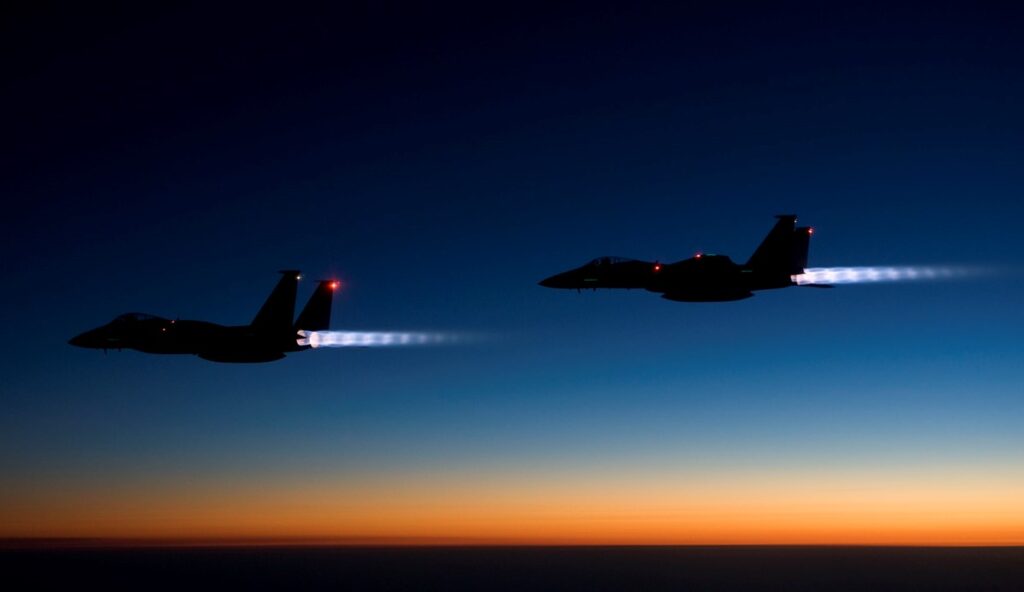
What followed was an orgy of destruction as American airpower flooded the battlespace. After more than three hours of fighting, American aircraft and nearby artillery positions laid waste to the Russian forces in just 45 minutes, killing hundreds and leaving the survivors fleeing for their lives.
“Out of all vehicles, only one tank survived and one BRDM [armored reconnaissance vehicle] after the attack,” one Wagner mercenary explained in a leaked audio recording, “all other BRDMs and tanks were destroyed in the first minutes of the fight, right away.”
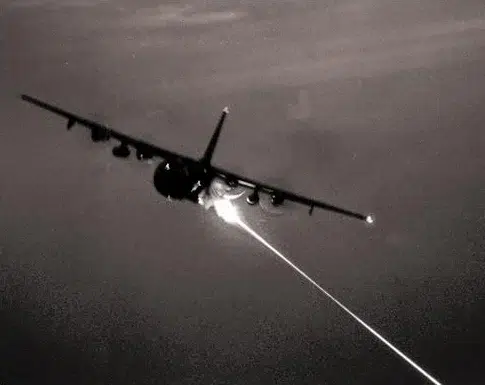
As the battle came to a close, the special operations team assessed the situation. One SDF soldier had received minor injuries and, aside from some bumps and bruises, not a single American had been injured. They watched through their night vision goggles as Wagner Group mercenaries and Syrian soldiers returned to gather their dead. The exact death toll remains subject to much debate, with figures ranging from as low as 55 to as high as 300 killed.
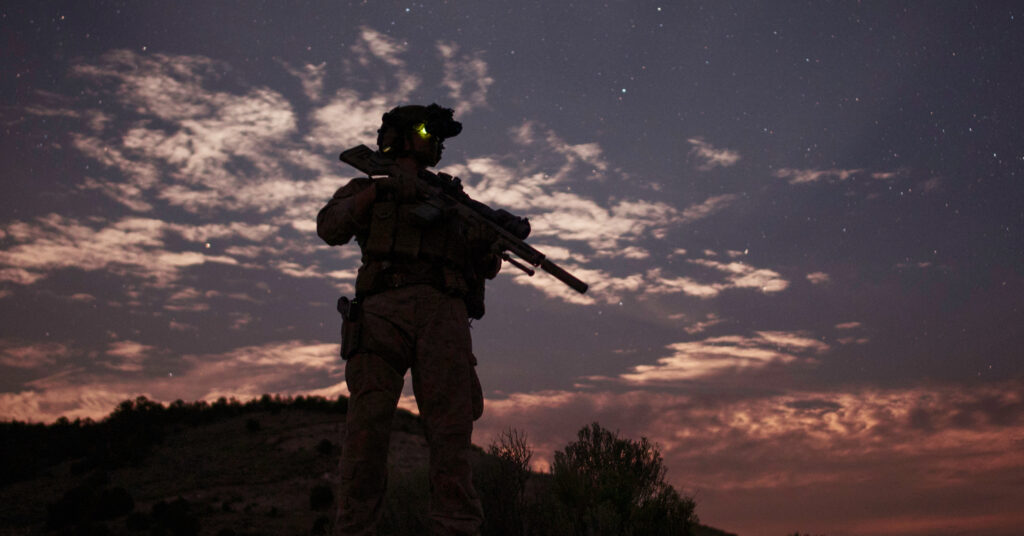
“Well, to make it short, we’ve had our asses f— kicked. So, one squadron f— lost 200 people right away, another one lost 10 people… and I don’t know about the third squadron, but it got torn up pretty badly, too. So three squadrons took a beating,” the Wagner mercenary can be heard saying in the leaked recordings.
According to the audio recordings, Wagner Group forces managed to close to within just 300 meters of the American position before the onslaught of airpower stopped their advance cold. The Russian government still denies any part in the ill-fated operation.
“They beat our asses like we were little pieces of s–, but our f— government will go in reverse now, and nobody will respond or anything, and nobody will punish anyone for this. So, these are our casualties.”
Read more from Sandboxx News
- Hell in the Highlands: The men infiltrate the Korean camp
- Marines are training to provide security for commercial ships in Middle East
- Iliff Richardson’s efforts against the Japanese in the Philippines were so impressive that he earned medals from both the Army and Navy
- This former Marine Cobra pilot saw combat in Afghanistan. Now, she’s commanding her first space mission
- Operation Acid Gambit: Panama, Noriega, and a CIA man
